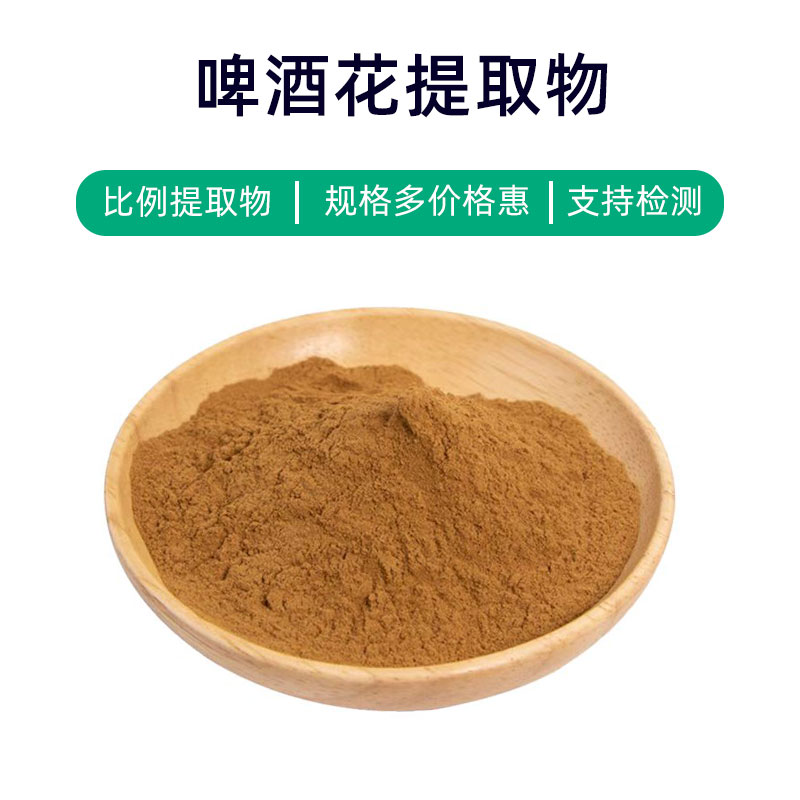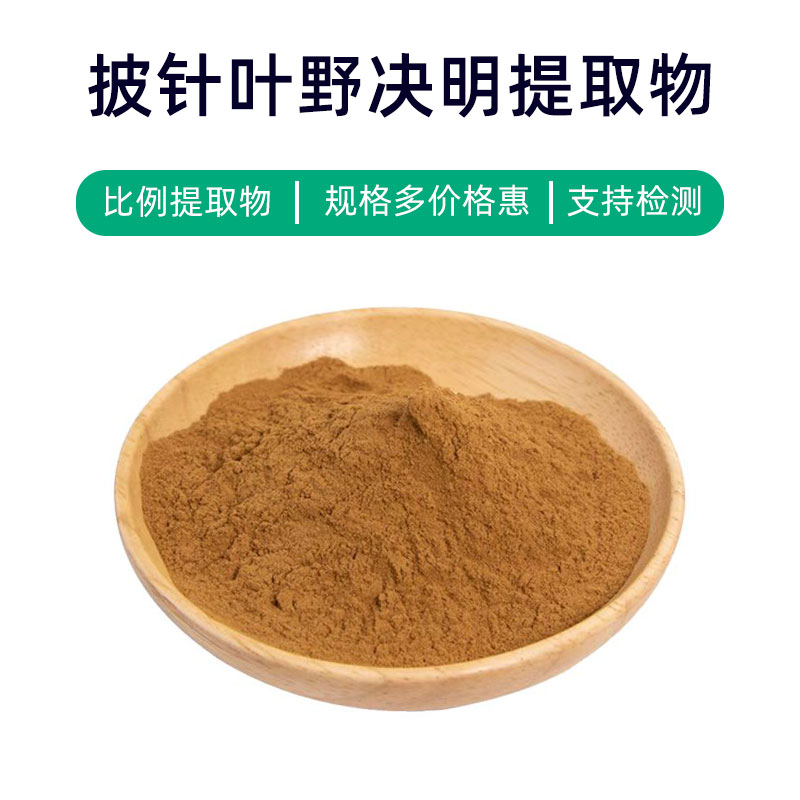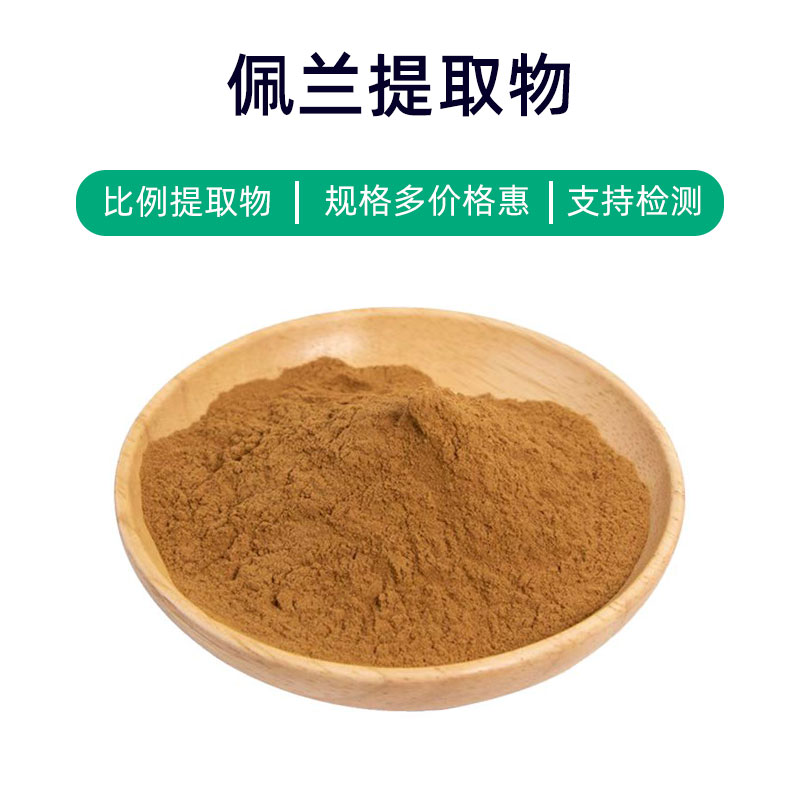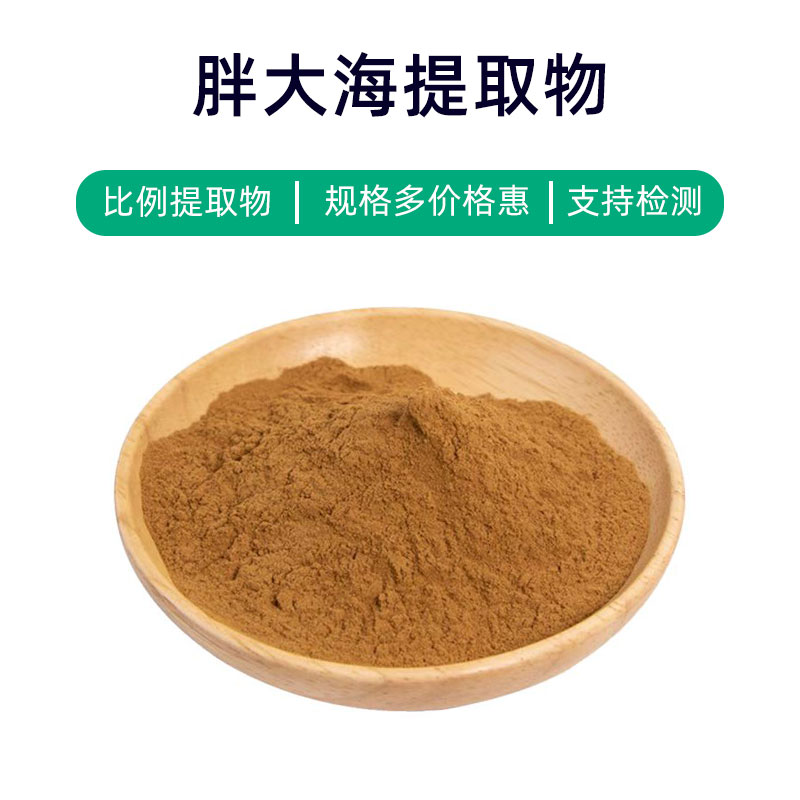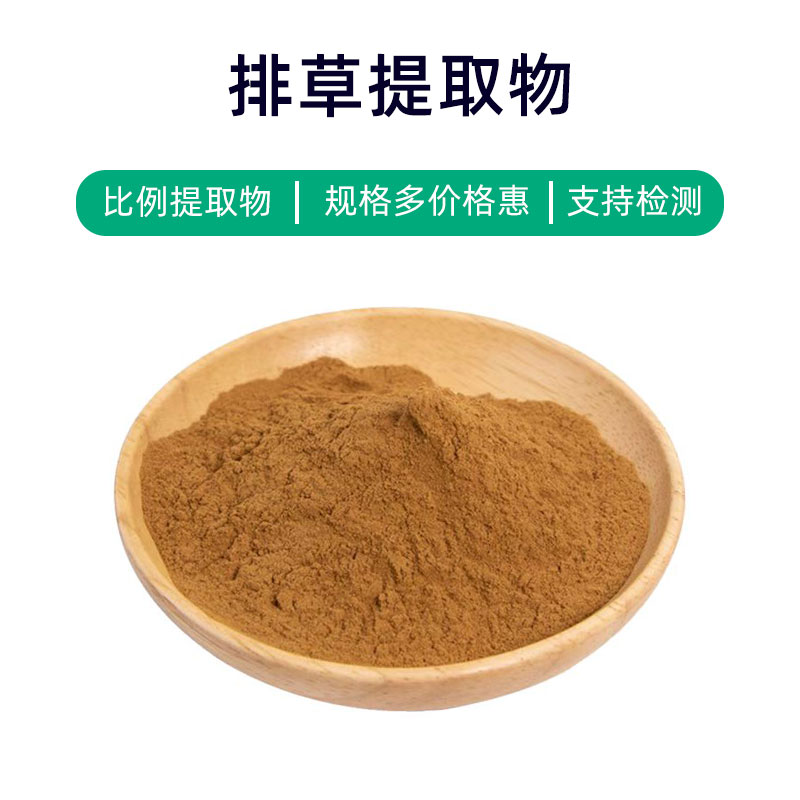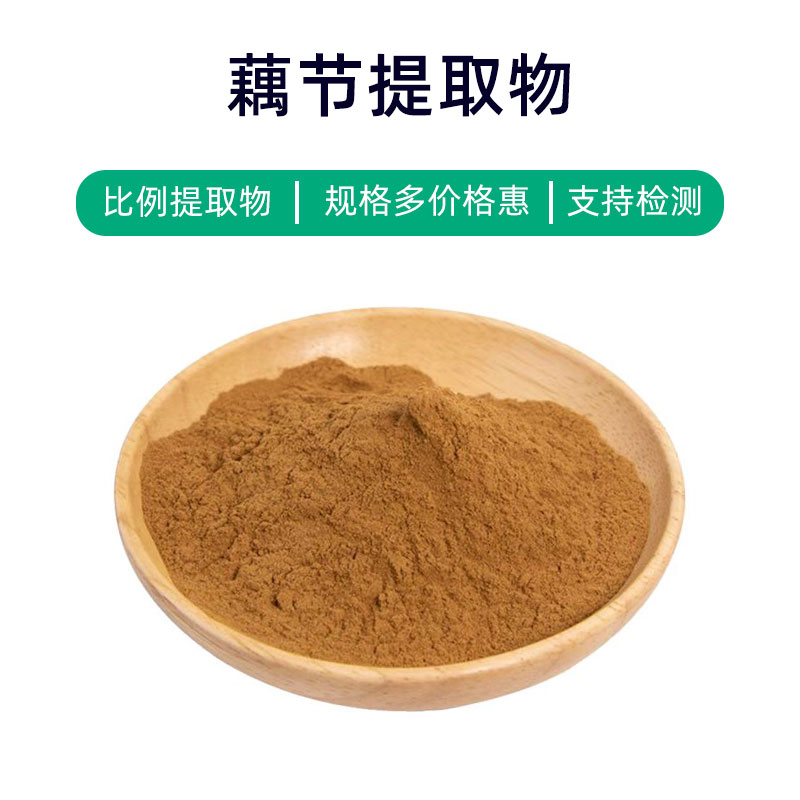Introduction to Red Clover Extract
Red Clover Extract is a natural plant extract obtained from the red clover (Trifolium pratense) plant. Its main components include isoflavones, flavonoids, proteins, amino acids, and more.
Red Clover Extract has a wide range of application values in the fields of medicine, health products, and cosmetics. In medicine, it is widely used to regulate the endocrine system, promote women's health, and alleviate menopausal discomfort. The isoflavones it contains are believed to have estrogen-like effects, which help ease issues such as menstrual irregularities and menopausal syndrome.
Additionally, Red Clover Extract is commonly used in health supplements as a nutritional aid, helping to boost immunity, enhance metabolism, and maintain overall health. In cosmetics, it is often used in skincare products due to its antioxidant and anti-aging properties, helping to reduce skin inflammation, improve skin texture, and keep the skin youthful and smooth.
Overall, as a natural plant extract, Red Clover Extract boasts rich nutritional components and various benefits, making it suitable for application in multiple product areas, contributing to health and beauty.
Production Process of Red Clover Extract
The production process of Red Clover Extract involves the following main steps:
- Raw Material Preparation: Select high-quality red clover plants as raw materials, perform preliminary cleaning and processing to remove impurities and maintain freshness.
- Crushing and Grinding: Grind the processed red clover plants to create finer particles, increasing extraction efficiency.
- Extraction: Use a suitable extraction method (such as maceration or supercritical fluid extraction) to extract effective components from the crushed red clover using an appropriate solvent (such as ethanol or water).
- Filtration: Filter the extraction solution to remove solid particles and impurities, yielding a pure extraction liquid.
- Concentration: Concentrate the filtered extraction liquid to increase the content of effective components in the solution.
- Separation and Purification: Separate and purify the concentrated extraction liquid to remove excess solvents and other impurities, resulting in a higher purity Red Clover Extract.
- Drying: Dry the purified extract to convert it into a powdered or solid form, making it suitable for packaging and storage.
- Packaging: Package the dried Red Clover Extract according to specific packaging requirements to ensure quality and stability.
- Storage: Store the packaged Red Clover Extract in a cool, dry, and ventilated environment, avoiding direct sunlight and high temperatures to ensure long-term stability and shelf life.
The above outlines a typical production process for Red Clover Extract, where each step requires strict control of conditions and operations to ensure product quality and safety.
Benefits and Side Effects of Red Clover Extract
Red Clover (Scientific name: Persicaria hydropiper) is a common wild plant, and its extract offers several beneficial effects, primarily seen in the following areas:
- Anti-Inflammatory and Pain Relief: Red Clover Extract contains abundant bioactive compounds with strong anti-inflammatory properties, which can help alleviate pain and inflammation, benefiting conditions like arthritis and sprains.
- Antibacterial and Disinfectant: The effective components in Red Clover Extract can inhibit and eliminate certain bacteria and fungi, making it useful for treating skin infections and boils.
- Antioxidant: Rich in antioxidants, Red Clover Extract helps neutralize free radicals in the body, slowing down cell aging and protecting skin and overall health.
- Digestive Aid: Red Clover Extract promotes gastrointestinal function, enhancing secretion of digestive fluids, stimulating appetite, and alleviating gastrointestinal discomfort and indigestion.
- Blood Pressure Regulation: Some components in Red Clover Extract have been shown to help lower blood pressure, potentially aiding those with mild hypertension.
- Anti-Allergic: Certain components in Red Clover Extract may have inhibitory effects on allergic reactions, helping to alleviate symptoms of allergic diseases.
Although Red Clover Extract offers various benefits, there are considerations and possible side effects to be aware of during use:
- Allergic Reactions: Some individuals may experience allergic reactions to Red Clover Extract, such as skin itching and swelling, so sensitive individuals should use it cautiously.
- Long-Term High Dosage Use: Extended high-dosage use of Red Clover Extract may burden the liver and kidneys; it's advised to use it under medical supervision.
- Drug Interactions: Components in Red Clover Extract may interact with certain medications, affecting their efficacy, especially anticoagulants and antihypertensive drugs, so avoid using them simultaneously.
In summary, Red Clover Extract has medicinal value and health benefits, but it's important to consult a physician or professional for advice before use, adhere to the correct dosage, and avoid adverse reactions.
Application Scenarios and Dosage of Red Clover Extract
Red Clover Extract holds application value in medicine, food, and cosmetics.
- Medical Applications:
- Anti-Inflammatory and Pain Relief: Red Clover Extract is useful for making topical creams, patches, etc., for alleviating symptoms of arthritis and sprains.
- Skin Issues: Appropriate amounts of Red Clover Extract may be used to treat skin conditions like eczema and boils, providing relief for itching and redness.
- Digestive Issues: Red Clover Extract is beneficial in enhancing digestive fluid secretion and can be used in oral liquids, capsules, etc., helping to ease gastrointestinal discomfort and indigestion.
- Food Applications:
- Flavoring Agent: A proper amount can be used as a flavoring agent in foods, enhancing taste in sauces and seasonings.
- Functional Foods: Rich in antioxidants, it can be utilized to prepare functional foods, such as antioxidant beverages and health products, boosting the body’s resistance.
- Cosmetic Applications:
- Skincare Products: Due to its antioxidant and anti-inflammatory properties, Red Clover Extract can be used in skincare products like creams and masks to promote skin health.
- Hair Care: It may also be used in hair care products like shampoos and conditioners, benefiting scalp health and hair growth.
Dosage Guidelines:
- Topical Medications: Generally, a suitable amount of Red Clover Extract can be directly applied to the affected area, gently massaging until absorbed.
- Oral Medications: Follow the dosage recommended by a physician, typically taking a suitable amount of oral liquid or capsules 2-3 times per day.
The amount used in food and cosmetic products should be determined according to specific formulations, generally following production processes and ingredient standards for safety and hygiene.
Overall, Red Clover Extract shows promising application prospects in medicine, food, and cosmetics, but it must be used under professional guidance and standards to ensure safety and efficacy.
Introduction to the Source Plant, Distribution, and Growth Environment of Red Clover Extract
Red Clover (Scientific name: Persicaria tinctoria), also known as Water Red Flower Seed, Qing Liao, etc., is a perennial herb in the buckwheat family. Below is detailed information on the source plant of Red Clover Extract regarding its introduction, distribution, and growth environment:
- Plant Introduction:
Red Clover is a perennial herb with ornamental and medicinal value, reaching heights of 1 to 2 meters with upright stems. Its leaves are elongate-oval, appearing in green, purple-red, and other variations. The small, dense flowers cluster at the top of the stem in conical inflorescences, showcasing vivid colors primarily in pink or light red. - Distribution:
Native to Asia, Red Clover is mainly found in China, Japan, Korea, Eastern Russia, and Indonesia. In China, it is widely distributed across the northeast, north, central, and south regions, thriving in moist areas near rivers, streams, lakes, grasslands, and fields. - Growth Environment:
Preferring a moist and well-drained environment, Red Clover grows more vigorously in full sunlight. It has strong adaptability and does not have strict soil requirements, thriving in sandy, loamy, and wet clayey soils, though it flourishes best in humid riverbanks, lake edges, or well-irrigated fields.
As a common herb, Red Clover flourishes abundantly in natural environments, easily spreading and reproducing. Its seeds can be dispersed by wind and water, or through underground rhizomes, leading to dense vegetation in wetlands, by water edges, and grasslands. Under suitable environmental conditions, it can grow thickly, creating bright landscapes while providing rich plant resources for surrounding ecosystems.
In summary, Red Clover is a prevalent perennial herb with strong adaptability, favoring humid environments, and is common in China and other parts of Asia.
Processing and Storage of Red Clover Extract
The processing of Red Clover Extract typically includes the following steps: first, collet the red clover plant and perform initial cleaning; next, undergo water or alcohol extraction processes to obtain the extract; finally, filter, concentrate, and dry the extract to complete the product.
For storage, Red Clover Extract should be kept in a cool, dry, and well-ventilated environment, avoiding direct sunlight and moisture. It is best to store it in a sealed container, away from heat sources and flammable materials. Additionally, precautions should be taken to prevent the extract from being affected by oxygen, moisture, and light to maintain its stability and activity.
Monica Sun is a seasoned expert in the plant extraction industry with over a decade of experience in research and production. She specializes in the extraction and purification of plant active ingredients, focusing on driving innovation in natural product applications. Monica has participated in the development of multiple functional plant extracts, delivering high-value natural raw material solutions for the health food, pharmaceutical, and dietary supplement sectors.









